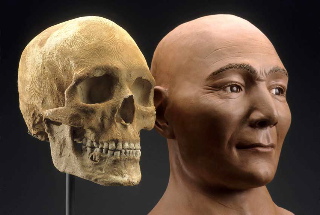
December 6, 2011

A mummy found in 1940, which has been dated to 7420 B.C., was first found by the husband-and-wife archaeological team of Sydney and Georgia Wheeler. The Wheelers, working for the Nevada State Parks Commission, were surveying possible archaeological sites near Carson City, Nevada, to prevent their loss due to guano mining. Upon entering Spirit Cave they discovered the remains of two people wrapped in tule matting. One set of remains, buried deeper than the other, had been partially mummified (the head and right shoulder). The Wheelers, with the assistance of local residents, recovered a total of sixty-seven artifacts from the cave.
These artifacts were examined at the Nevada State Museum where they were estimated to be between 1,500 and 2,000 years old. They were deposited at the Nevada State Museum’s storage facility in Carson City where they remained for the next fifty-four years.
In 1996 University of California, Riverside anthropologist R. Ervi Taylor examined seventeen of the Spirit Cave artifacts using mass spectrometry. The results indicated that the mummy was approximately 9,400 years old (uncalibrated Radio-Carbon Years Before-Present (RCYBP); ~11.5 Kya calibrated) — older than any previously known North American mummy.
In March 1997, the Paiute-Shoshone Tribe of the Fallon Reservation and Colony made a Native American Graves Protection and Repatriation Act (NAGPRA) claim of cultural affiliation with the artifacts. Further study determined that the mummy exhibits Caucasoid characteristics resembling the Ainu, although a definitive affiliation has not been established. There is also a possible link to Polynesians and Australians that is stronger than to any Native American culture.
The findings were published by the Nevada State Museum on October 24, 1999, and received international media coverage.
In September, 2006, the United States District Court for the District of Nevada ruled on a lawsuit by the Fallon Paiute-Shoshone Tribe and said that the Bureau of Land Management made an error in dismissing evidence without a full explanation. The court order remanded the matter back to the BLM for reconsideration of the evidence.
To restate this, the Spirit Cave Man (above) is thus 9400 years old and exhibits Caucasoid characteristics resembling the Ainu, long before Caucasoids were suppose to be in North America.
Of course, a similar find is found sealed in an enigma, wrapped in a like-natured mystery, that of the Kennewick Man of Washington State.
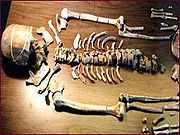
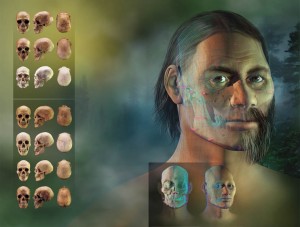
One of the first forensic reconstructions from the skull of the Kennewick Man looked extremely familiar to those who viewed it soon after its completion.
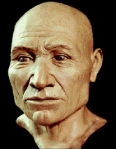
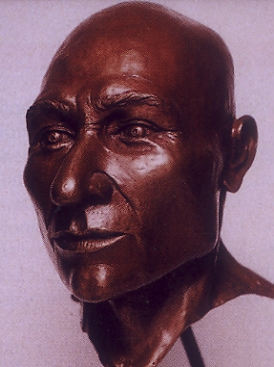


Very familiar.
About Loren Coleman
Loren Coleman is one of the world’s leading cryptozoologists, some say “the” leading living cryptozoologist. Certainly, he is acknowledged as the current living American researcher and writer who has most popularized cryptozoology in the late 20th and early 21st centuries.
Starting his fieldwork and investigations in 1960, after traveling and trekking extensively in pursuit of cryptozoological mysteries, Coleman began writing to share his experiences in 1969. An honorary member of Ivan T. Sanderson’s Society for the Investigation of the Unexplained in the 1970s, Coleman has been bestowed with similar honorary memberships of the North Idaho College Cryptozoology Club in 1983, and in subsequent years, that of the British Columbia Scientific Cryptozoology Club, CryptoSafari International, and other international organizations. He was also a Life Member and Benefactor of the International Society of Cryptozoology (now-defunct).
Loren Coleman’s daily blog, as a member of the Cryptomundo Team, served as an ongoing avenue of communication for the ever-growing body of cryptozoo news from 2005 through 2013. He returned as an infrequent contributor beginning Halloween week of 2015.
Coleman is the founder in 2003, and current director of the International Cryptozoology Museum in Portland, Maine.
Filed under Cryptomundo Exclusive, CryptoZoo News, Fossil Finds